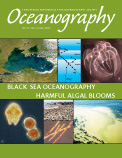First Paragraph
More than a decade ago, the U.S. approach to research on harmful algal blooms (HABs) was uncoordinated and modest in scale. Research groups were few and their work was piecemeal and constrained by small budgets that fluctuated with the sporadic blooms that would occur. There were virtually no U.S. government laboratories involved in HAB research. Funding for academic scientists was largely available through competitions with the entire oceanographic community since there were no targeted funding programs for HABs. This situation changed dramatically with the formulation of Marine Biotoxins and Harmful Algal Blooms: A National Plan (Anderson et al., 1993). This plan, the result of a workshop involving academic and federal scientists, agency officials, and industry representatives identified major impediments to the goal of science-based management of resources affected by HABs, and made recommendations on the steps needed to remove those impediments.

